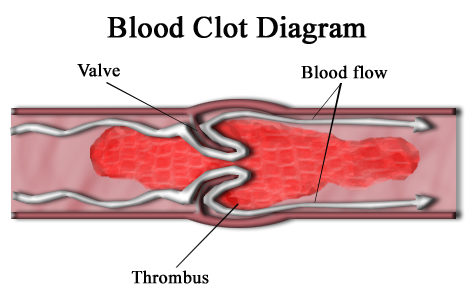Blood Clots in Arteries
- Home
- Vascular Treatment
- Blood Clots in Arteries

Blood clots in arteries, also known as arterial thrombosis, can obstruct blood flow and lead to severe complications such as heart attacks, strokes, and peripheral artery disease. These clots form when the blood coagulates abnormally within an artery, often due to underlying conditions like atherosclerosis.
Understanding Blood Clots in Arteries
Arterial blood clots form when atherosclerotic plaques rupture, triggering the coagulation cascade and leading to clot formation. These clots can partially or completely block the artery, cutting off the oxygen and nutrient supply to the tissues downstream. This can result in tissue damage, organ failure, and life-threatening conditions if not treated promptly.
Managing Blood Clots in Arteries
Treatment for arterial blood clots focuses on restoring blood flow and preventing further clot formation. This may involve medications such as anticoagulants and thrombolytics, as well as procedures like angioplasty, stenting, or surgical thrombectomy. Lifestyle changes and managing underlying conditions are also crucial for preventing future clots.
Vascular Surgeon in Vadodara (Rutvij Shah):
Individuals experiencing symptoms of arterial blood clots should consult a vascular surgeon in Vadodara, such as Rutvij Shah. Vascular surgeons are skilled in diagnosing and treating arterial thrombosis, using advanced techniques to restore blood flow and prevent complications. They provide comprehensive care to ensure the best possible outcomes for patients with blood clots in arteries.
In conclusion, blood clots in arteries are a serious condition that requires prompt medical attention to restore blood flow and prevent severe complications. Consulting a skilled vascular surgeon in Vadodara can ensure effective treatment and optimal outcomes for patients with arterial thrombosis.
-
What causes blood clots in arteries?
Arterial clots are often caused by atherosclerosis, where plaques build up in the artery walls and can rupture, leading to clot formation. Other causes include trauma, certain medical conditions, and lifestyle factors.
-
What are the symptoms of an arterial blood clot?
Symptoms depend on the location of the clot but can include pain, swelling, numbness, and a cold or pale limb. In severe cases, it can lead to heart attack or stroke symptoms.
-
How are arterial blood clots diagnosed?
Diagnosis involves physical examination, imaging studies like Doppler ultrasound, CT angiography, or MRI, and blood tests to identify clotting disorders.
-
What treatments are available for arterial blood clots?
Treatments include medications to dissolve clots, procedures like angioplasty and stenting, or surgical thrombectomy to remove the clot. Long-term management involves lifestyle changes and medications to prevent future clots.
-
How can arterial blood clots be prevented?
Prevention includes managing risk factors like high blood pressure, high cholesterol, and diabetes, as well as adopting a healthy lifestyle with regular exercise, a balanced diet, and avoiding smoking.
